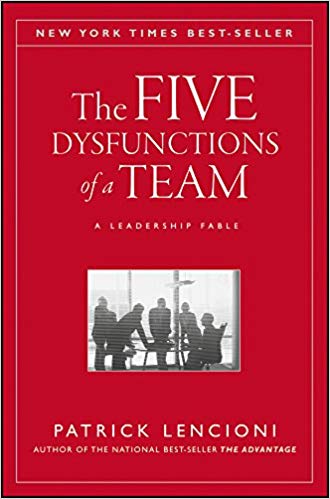

This article is an excerpt from the Shortform summary of "The Five Dysfunctions of a Team" by Patrick Lencioni. Shortform has the world's best summaries of books you should be reading.
Like this article? Sign up for a free trial here .
What is absence of trust in a team? What does trust mean, and why do people misbehave when trust is gone? Why is this dysfunction so damaging to team productivity? Learn more in this tip from Five Dysfunctions of a Team.
In the book Five Dysfunctions of a Team, DecisionTech suffers from an absence of trust.
“Trust” is an often-misused word, and tends to be used to signify predictability in someone’s behavior (as in, “I trust that you will get this done”).
When discussing interactions between members of a team however, trust means something deeper. Trust is the quality of being able to feel safe and unjudged by one’s teammates. It is the ability to be vulnerable with one another (by being willing to admit mistakes and reveal weaknesses).
If there is a dysfunctional absence of trust, the root of this is fear that exposing your weaknesses will be used against you. You don’t believe that other people have your best interests at heart.
In an absence of trust, teams miss important opportunities and channel their energy into unproductive behavior, suppressing their true feelings. Instead of honesty and openness, you get politics—people acting and speaking based on how they believe they will be perceived by others, not on what they truly feel. Without that foundation of openness and honesty and in absence of trust, team members become quick to attribute disagreements to malice and are more likely to hold grudges.
In such an environment of dysfunctional absence of trust, colleagues are reluctant to ask for or offer help, because they either don’t feel comfortable being wrong, or are afraid of looking inexperienced in the eyes of their colleagues if they step outside their field of expertise.
The consequences to the organization with an absence of trust are severe: issues don’t get resolved, mistakes are repeated, and team meetings become meaningless theatrical displays. Since such meetings achieve nothing and waste everyone’s time, colleagues dread them and look for ways to avoid spending time with one another.
Taken together, Dysfunction One (Absence of Trust) prevents colleagues from taking full advantage of each other’s skills.
Example 1
Carlos is criticized by his colleagues for being too reserved and for holding back too much during meetings. This stems from his unwillingness to be vulnerable in front of his colleagues, which is itself a product of the mistrustful and overly political environment at DecisionTech. Carlos is masking his true thoughts because he fears that speaking his mind will lead to sarcasm, hostility, or even outright retaliation from his teammates—so he keeps silent. Unfortunately, this keeps the vicious cycle going and only serves to further drag the team down, as everyone would actually benefit more from hearing his perspective.
Example 2
When asked her greatest strengths and weaknesses, Mikey gives highly guarded, tight-lipped responses, while other members of the team reveal…
———End of Preview———

Like what you just read? Read the rest of the world's best summary of Patrick Lencioni's "Five Dysfunctions of a Team" at Shortform . Learn the book's critical concepts in 20 minutes or less .
Here's what you'll find in our full Five Dysfunctions summary :
- What the Five Dysfunctions are
- Why absence of trust is the fundamental dysfunction
- How to get people to argue the right way
- Strategies and exercises to overcome each dysfunction






